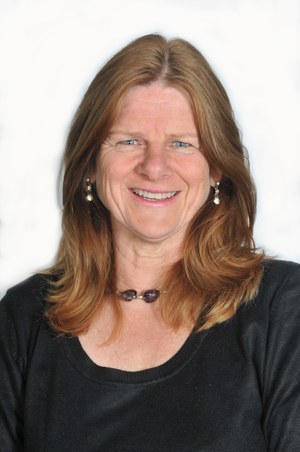
Popular topics

-
References
Morris L et al. (1991). Macrophages in haemopoietic and other tissues of the developing mouse detected by the monoclonal antibody F4/80. Development 112, 517–526.
Insights From Immunologists: Professor Lynn Morris

F4/80, clone CI:A3-1, is a well-characterized and extensively referenced macrophage and microglia marker. Recently, we had the honor of joining Professor Siamon Gordon, the father of F4/80, in celebrating its discovery over 40 years ago, alongside the past members of his lab who in the decades since have made significant contributions to macrophage research, and the scientific landscape as a whole.
We spoke to Professor Lynn Morris about her impressive scientific career, from working on F4/80 in Professor Gordon’s lab as a student to her significant achievements in HIV research and vaccine discovery.

Bio-Rad (BR): When did you first become interested in a career in science?
Lynn Morris (LM): I am intrinsically curious and always want to understand more about how things work or how they come to be, which of course is what research is about.
I particularly enjoyed learning about living systems, even as a child. At school, I recall choosing to do a project about fungi because of moldy bread, and at university researching the fascinating world of archaebacteria that live in harsh environments and that we carry in our bodies as mitochondria. So, I always migrated toward biology and did fairly well at it.
BR: How did you become interested in macrophages?
LM: I became interested in macrophages because I joined Siamon Gordon’s laboratory in 1984 as a DPhil (PhD) student. My project was to use the newly isolated antibody F4/80 to map the location of macrophages in the developing mouse. The paper published in Development has been well-cited so I feel I made an important contribution to the field.
I decided I wanted to work on human disease and so moved to a lab to study a parasite that infects macrophages, but it was in mice, not humans! After that, I moved back to South Africa to work on the basic science of human immunodeficiency virus (HIV) and contribute to the vaccine effort which has been enormously rewarding — even if we don’t have a vaccine yet!
BR: Can you describe a highlight from your career?
LM: One of the things I am most proud of is that we discovered a very potent monoclonal antibody, CAP256 that is being tested in humans to prevent HIV infection.
BR: Can you tell us about your current research/role?
LM: I am currently the Deputy Vice-Chancellor of Research and Innovation at the University of the Witwatersrand in Johannesburg, South Africa. So, I have moved from the microscopic world of viruses to thinking about the role of research in tackling global challenges in healthcare and beyond. As we saw during COVID, university research was critical to understanding this new virus, how it spreads and causes disease, and of course how to stop it. The development in record time of highly effective vaccines remains one of the most significant examples of how research is essential to solving public health problems.
BR: What advice would you give to early career scientists?
LM: Advice is tricky because everyone needs different input, but I would venture to say that learning to be a good communicator is worth doing for everyone. As scientists, we tend to get bogged down in technical jargon and bore and even intimidate people. Being a user-friendly scientist will also increase the impact of your work. People won’t remember the details, but they will remember the problem you were trying to solve and the ingenuity you used to solve it.
Thank you, Professor Lynn Morris, for taking the time to share your career path and insights with us. We hope your story helps to motivate the early career researchers who read our blog!
Has Prof Morris’s Passion for HIV Research Inspired You?
Bio-Rad offers a range of antibodies in a variety of different formats to enable you to study key HIV proteins.
References
Morris L et al. (1991). Macrophages in haemopoietic and other tissues of the developing mouse detected by the monoclonal antibody F4/80. Development 112, 517–526.
You may also be interested in...

View more Careers or Immunology blogs















